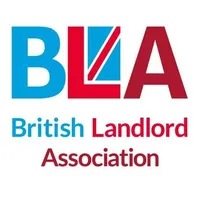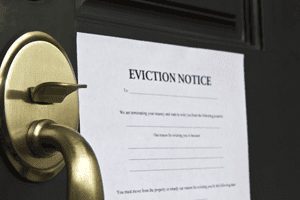Tenant Deposit dispute & deposit deducts: Introduction
After the tenant has successfully paid the deposit, the landlord needs to protect the deposit in a government-backed tenant deposit protection scheme.
Even if the tenant has paid part of the deposit and not paid the remainder promised deposit you must protect within 30 days what you have received.
Many landlords make the mistake:
- Waiting for the remainder of the deposit and wrongly assume the 30 days start from the time they have received all of the deposit.
- The landlord to help the tenant has agreed for the tenant to pay the full deposit over a few months. And wrongly assumed they did not have to protect the deposit they had received.
It is best not to agree for the deposit to be paid over a few months. It causes a headache and problems further down the line.
The landlord has 30 days to protect the deposit and give the tenant:
- The deposit prescribed information
- The Deposit Certificate
By not giving the tenant the above 2 documents will mean you will not be able to serve a section 21 notice on the tenant.
The strict sanctions over the deposit regulations have worked well to force compliance.
The contention comes when the tenant wants the entire deposit returned and fails to acknowledge any damage to the let property or deductions for rent arrears.
Some 19% of tenants who have lost part, or all of their deposit feel the deduction has been unfair. Official figures reveal that around 30% of all tenancies end with deposit deductions, out of which 13% lose their entire deposit money.
Types of Schemes & Tenant deposit Scheme providers
There are 3 companies that are authorised by the Government to deal with the tenant’s deposit, and they are:
Mydeposit.co.uk
TDS
There are two types of schemes the landlord can elect to use, and they are:
Custodial: The landlord transfers the tenant deposit money to one of the scheme providers. This scheme is usually free for landlords to use. The Scheme providers earn interest on the monies held.
Insured: The landlord insures the deposit money paid by the tenant and insures the deposit money paid. The landlord has to buy the insurance policy. Landlords cannot ask the tenant to pay the fee for the insurance policy. To do so would be a breach of the tenant fee ban legislation.
What are the landlord’s responsibilities regarding the deposit?
The deposit legislation states that the tenancy deposit is the property of the tenant. During the tenancy period, neither the tenant nor the landlord has the right to the deposit.
This is in the event the landlord cannot or does not pay back the deposit to the tenant.
An exception is when it’s protected with an insurance-based scheme. Yet, it is still guaranteed by the scheme.
When the tenancy ends, the tenant needs to ask the landlord to pay back the deposit money. The landlord must respond and state if they want to deduct money from the deposit. The landlord needs to provide a list of deductions with the reasons why a deduction has been made for each item.
Which grounds deduction can be legitimised:
- When the tenant agrees
- When there has been a dispute resolution
- When there is a court order
Unless one of the above is true, the landlord cannot deduct money from the tenancy deposit.
What are the usual reasons for deposit deductions?
There are many reasons why a tenant can end up with deposit money deducted. The main one is the contract between the parties, the tenancy agreement. The tenancy generally includes special clauses which set out the responsibilities of the tenant.
Common reasons for tenants losing all or part of deposit:
- Unpaid rent at the end of the tenancy
- Unpaid bills at the end of the tenancy
- Stolen or missing items that belong to the landlord.
- Damage to the property and its contents (owned by the landlord)
- Indirect damage due to negligence and lack of maintenance
- insufficient hygiene at the end of tenancy
- Lack of maintenance of key facilities – depending on the tenancy.
- Unwanted items left after keys are returned (and pick up not arranged)
- Legal fees
- Unkept garden
Items that will likely be deducted from the deposit immediately
- Unpaid bills
- Unpaid rent
- Stolen/missing property.
Direct damage that will be subject to tenancy deposit deductions
- Cigarette burns to carpet and furniture.
- Holes in the wall from hanging pictures and decorations.
Indirect damage is damage to the property resulting from the tenant’s lack of essential maintenance and care. E.g., if the tenant leaves the window open and goes on holiday and heavy rains floods the flat and causes water damage.
Most rented houses and flats get a professional clean when there is a change of tenants. That’s why it is expected the tenant to leave the property in at least as good as the state it was when let.
If the rented house has a garden, the lease might require the renter to keep it maintained. Not maintaining the garden would result in a deduction to cover the cost of the gardening service.
If the renter leaves luggage, items, or furniture on the property and fails to arrange collection with the landlord. It may have to be stored or discarded. The cost would be covered by the tenant’s deposit.
Landlord Unfair Deposit deductions
The common complaint against landlords is landlord unfair deposit deductions. The tenant cannot be held accountable for all maintenance and repair. Regardless of the tenancy agreement, the landlord has several key responsibilities. They are set out by the Landlord and Tenant Act of 2004.
The landlord has to maintain and keep in good working condition the structural elements of the property and all utility systems.
A landlord cannot ask a tenant who holds an assured shorthold tenancy to carry out any work or maintenance where the landlord has a legal obligation to do it under the Housing Act.
For example, the landlord cannot ask the tenant (even if this is in the tenancy) to make sure the gas safety check is done each year. It is a legal obligation of the landlord to do this.
Landlords legal obligations to carry out repairs and maintenance are
- Basins
- Boiler
- Sinks
- Baths and sanitary conveniences
- Central heating
- Other essential electrical appliances
Maintenance and repair of the structure and exterior of the dwelling
- Walls
- Floors
- Roof
- Ceilings
- Foundations
- Gutters
- Drains and external pipes.
Unless the tenant has caused them to malfunction, the landlord has to repair or replace the appliances part of the property.
Also, they have to keep in good working order the plumbing and electrical wiring of the property. This is important.
They can become a health hazard and even cause the tenant to temporarily flee the house.
The landlord must maintain them. It’s the tenant’s responsibility to monitor them and report any issues.
The tenant should allow access for the landlord or a contractor to assess and repair the damage.
The landlord is granted a “reasonable period” in which they must conduct repairs.
What is fair “wear and tear”?
The House of Lords defines the phrase ‘wear and tear’ as: “Reasonable use of the premises by the tenant and the ordinary operation of natural forces.”
Wear and tear are the natural deterioration of an item through its usual exploitation. This is especially important for tenancies that have run for a more extended period, e.g., 4 years.
Throughout the years, everything from electrical appliances to flooring would wither away. It would be unfair for a tenant to pay with their deposit in full. However, more often than not, these cases are subjected to deposit disputes.
The final judgement of wear and tear always falls into the hands of a designated adjudicator.
Common factors that influence wear and tear
- Type of item and its projected life span
- Type of damage and the item’s material
- Brand and manufacturer specifications
- Documented state in the move-in inventory
- Age of item and tenancy length
The adjudicator will examine these factors and any relevant supporting documents. Afterwards, they will split the cost of repair/replacement of the item fairly.
The portion that is attributed to wear and tear would not be paid by the tenant. Yet, they might still have to contribute.
Tenancy inventory
Tenancy Inventory is crucial for resolving deposit disputes. It documents the state of the property before the tenancy commences. When the tenancy ends, another checkout inventory is carried out.
When the two reports are compared, it’s easy to see how the property’s condition has changed. It is the most vital evidence to assign which damages are caused by the tenant.
If possible, the landlord and tenant should be in attendance at the property when the report is being prepared. Otherwise, a tenant cannot correct any issues that might lead to a deposit later.
What to include in the check-in report at the beginning of the tenancy
- Contents of each room
- Condition and quality of the furniture
- State and usability of all electrical appliances
- Power sockets, light switches, and light bulbs
- The quality of the surfaces (floors, tiles, wooden furniture, glass)
- Scuff marks, bends, dents, and other surface damage
- Visible damage on the furniture and walls
- Rips, tears, and holes in the upholstery
- Condition of all carpets
- Mould, mildew on the walls, around windows and in corners
- Hygiene of the entire property
The report should be checked and signed by a witness. If possible, it’s best to get the tenant or letting the agent sign it.
Necessary documentation to deal with any deposit dispute.
Essential documents that will be useful when ending a tenancy
- Copy of the tenancy agreement.
- Proof of payment of the deposit
- Dated prescribed information.
- Copy of the inventory report at move in and move out.
- Date and signed photos are accompanying the inventory.
- Receipts of rent payments
- Receipts of payments of the utility bills
- Written notices and emails with the landlord.
Checklist before the tenant leaves the property
- Pay outstanding rent.
- Pay all unpaid utility bills.
- Replace all broken light bulbs, light switches and power sockets
- Fix all holes in the walls, scratches to surfaces and hanging or loose cabinet doors.
- Do the garden if required by the lease
- Clear and unblock any problematic drains in the house.
- Perform end of tenancy cleaning of the property.
- Clear out all rubbish.
- Remove all furniture and appliances that are not part of the property.
- Deodorise any foul odours from house pets.
How to resolve disputes for the deposit
When the tenancy expires, the tenant may request their deposit back from the landlord. The landlord has 10 days to reply and open a discussion about possible deductions.
At the same time, the landlord needs to release the non-disputed part of the deposit and return it to the tenant. The rest will remain in the tenant deposit scheme until the matter has been resolved.
For insurance-based schemes, the landlord has to repay the tenant the balance. Then, pay the disputed amount to the scheme to remain until the matter is resolved.
The landlord has to send the tenant a list with all deductions and reasoning for each one (if they don’t, request one).
Depending on the length of the tenancy, the tenant might be expected to pay a fair contribution to refreshing the property. E.g., split the bill for a new coat of paint, fix holes left from the tenants’ pictures and decorations, replace light switches and similar small refreshments.
How to use the “alternative dispute resolution” – ADR
If the parties cannot come to an agreement over the deposit deductions, ask your deposit protection scheme for advice.
They are experts in landlord and tenant law. Often, they can highlight beneficial statutes and cases that can provide additional insight.
If you still can’t come to an agreement, use the free “alternative dispute resolution”. It is provided by your tenancy deposit scheme and serves as an alternative to the county court.
The scheme will appoint an impartial adjudicator. They will review the case and deliver a final decision. Once the decision has been made, you cannot dispute further. Make sure you’ve prepared your case before this has begun.
The adjudicator will request all relevant documents and other evidence from each party.
You can also print out your emails with the tenant and add them to the bundle. If your photos or inventory are being signed by a witness different from the tenant or letting agent, have them write a statement. Submit that with the rest of your evidence.
Note that ADR is possible only if the deposit is protected in a government-authorised scheme.
Otherwise, the county court would be your only option.
I did not protect the tenant’s deposit; can I still serve a section 21 notice?
No, if the deposit was not protected, you will not be able to serve a section 21 notice. Under the deposit legislation, you must protect the deposit within 30 days of taking it.
You must give the tenant the deposit prescribed information too within 30 days.
Although it is not a legal requirement to get the tenant to sign and date the deposit certificate and the prescribed information, it is wise to get both signed and dated to avoid contention.
I need to evict my tenant, but I did not protect the deposit; what can I do?
If you failed to protect the tenant’s deposit and need vacant possession of your property, you have a few options:
You can consider seeking possession under section 8 if you have rent arrears. You will need rent arrears of 2 months. In addition, you will need rent arrears which equates to 3 times the deposit value, just in case the tenant makes a counterclaim for the non-protection of the deposit.
You will need to ensure the tenancy has had no disrepairs, which the tenant may try to counterclaim against.
If the section 8 route is not possible or too risky due to the level of rent arrears or disrepair, you need to consider the section 21 route.
To use the section 21 route, you will need to return the deposit money back to the tenant.
If the tenant has rent arrears, then obtain tenants instructions in writing to use the deposit held towards the rent arrears.
Once you have this or return the deposit monies to the tenant, you can serve a section 21 notice.
When serving a section 21 notice, ensure you have fully complied with all your obligations as a landlord.
Some other non-compliance on your part could also make the section 21 notice invalid.
You can check our section 21 checklist here to see if you have no further issues that need to be dealt with before serving a section 21 notice.
I didn’t protect the deposit; my tenant does not know. Should I tell the tenant?
Do not open a can of worms; if the tenant does not know, say nothing. The breach nevertheless has been committed by not protecting the deposit or protecting it in time—no benefit in saying anything to the tenant.
It can be a problem if the landlord makes unreasonable deductions from the deposit money. At this point, if the tenant seeks advice, the breach committed by the landlord of not protecting the deposit or protecting it late will come to light.
How much compensation will I have to pay for not protecting the deposit?
Many tenants think that they will be awarded three times the value of the deposit, in addition, the deposit back.
The law says “up to” 3 times the value of the deposit. The keyword is “up to” 3 times, which does not mean that the tenant will automatically receive three times the value of the deposit. It is rare; a court will award the full three times value of the deposit to a tenant.
If a landlord has failed to protect the deposit in time, and the tenant or someone acting for the tenant, has contacted the landlord, then the landlord should:
- Ask the tenant or their representative to put the request in writing.
- IMPORTANT; If a tenant claims compensation, the landlord can counterclaim for any rent arrears or damage to the let property. The landlord can also claim the cost of any notices that may have served on the tenant.
- The landlord should respond swiftly, to the tenant’s request, for the alleged deposit breach.
- Should the tenant wish to proceed to claim against the landlord, the tenant should notify the landlord’s intent to counterclaim.
- If you have nothing to counterclaim against the tenant, consider offering the tenant one times the value of the deposit and return the tenant’s deposit.
- If you are a new landlord or a landlord with 1 or 2 properties, you should seek to reduce damages. It is reasonable to make a submission to the court that you are not a professional landlord.
As such, the compensation should be one time the value of the deposit. There is a case history supporting this. You did not intentionally breach the TDS legislation; you probably were not aware of this legislation. It would be best if you were truthful to the court about why the deposit was not protected.
Where can I get help to deal with the claim against me?
Courts very rarely award the full time three times the value of the tenant’s deposit, especially if you are not a professional landlord.
You can seek expert advice and representation from Landlord Advice UK who have helped thousands of landlords against tenant deposit claims.
Author: Simon Hampton Date: 1st of January 2024
Top read blogs:
Best Landlords Association to join in 2021?
Forfeiture of lease – Forfeiting Commercial lease under COVID-19
Debt respite Scheme: Tenant breathing space legislation guide for landlord
Government extends moratorium on commercial property evictions to March 2022





